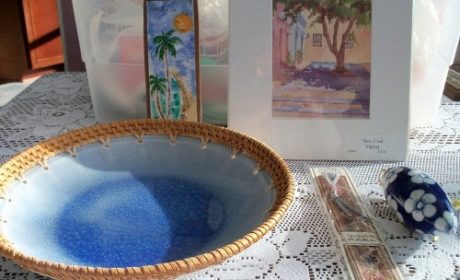Would you like to travel the globe without leaving your kitchen? Author and guest writer, Brette Sember, will let you do just that by introducing you to cookies from around the world. Brette should know since she wrote the book on cookies: Cookie A Love Story.
Although cookies are an exceptionally American treat, they are enjoyed in other areas of the world. The word cookie itself comes from the Dutch for ‘little cake,’ and the cookie’s roots are deeply connected to Western Europe.
The cookie traveled with the colonists to the United States and took on a life of its own once it got here. There are cookies on every continent now and it has truly become a dessert enjoyed all over the world!
Christmas cookies from around the world

Christmas is the most popular time of year for baking cookies. If you’re looking for new recipe ideas, check out these international cookies.
South America
South American cookies showcase the products of the continent, including cornmeal, citrus, cinnamon, brown sugar, peanuts, and pine nuts. A special South American cookie is the alfajore, two shortbread cookies cradling a rich dulce de leche filling.
Although they are a traditional South American cookie, alfajore actually originated in the Middle East. The cookie traveled to Spain with the invasion of the Moors, then came across the ocean with Spanish explorers.
Seville cookies, from Mexico include orange, lemon, and lime flavors.
Although we might associate the Mexican wedding cake cookie with Mexico, it actually is a type of cookie made in many cultures around the world, and has become very Americanized.
Europe
Although cookies are deeply connected to Europe, the cookies enjoyed here differ greatly from American cookies. Western European cookies are always shaped and precise, in comparison to American drop cookies. This makes them feel elegant and very European.

The linzer cookie is a prime example. Originating in Austria the linzer is two butter cookies sandwiching a black currant filling, with a delicate center cut out.
Germans still make springerle, butter cookies spiced with anise. They are made by rolling dough onto a cookie board or rolling the dough with an imprinted rolling pin.
Springerle originated as a treat for the winter pagan holiday, when those who couldn’t afford to sacrifice an animal instead made animal springerle and offered those to the gods. Once Christianity took over, springerle was used to illustrate Bible stories or to celebrate life events and were sometimes exchanged like Christmas cards.
The French are known for the madeleine, a cake-like cookie baked in special molds, and dusted with powdered sugar.
Scandinavians are associated with their delicate butter cookies: each specific shape having a different name.
Italian cookies have become popular in the U.S., so you may be familiar with cucidata, pizelle, and biscotti.
Middle East
Cookies from the Middle East are usually made with semolina flour and use regional flavors such as honey, dates, walnuts, and cardamom. The mamoul is made in a wooden cookie mold and delicately flavored with orange flower water.

Africa
The British influence is unmistakable in South Africa, where they make soetkoekies with red wine, cinnamon, nutmeg, almonds, brown sugar and egg white glaze on the top. These sometimes have festive red stripes decorating them. Soetkoekies are often packed up and taken to the beach for a Christmas picnic (it’s summer at Christmastime here).
Asia
Although cookies have not traditionally been enjoyed in this region (the fortune cookie is an American invention!), in Burma (now Myanmar) large cookies are made in a two-piece cookie board and served as a meal. The kue semprong uses rice flour, coconut milk, sugar, and cinnamon to achieve a crisp, delicate texture.
Australia
The Anzac is practically the national cookie of Australia. Named after the Australia and New Zealand Army Corps (ANZAC), the cookie was made during World War I as a durable treat with some nutritional value that could be sent to troops. Anzacs are sold for Anzac Day (similar to Veterans’ Day) to raise funds for veterans.
Anzacs
3/4 cup rolled oats
1/2 cup sugar
3/4 cup coconut
3/4 cup whole wheat flour
2 tablespoons golden syrup
1 teaspoon baking soda
2 tablespoons boiling water
1/2 cup butter, melted
Pre-heat oven to 320 degrees.
Mix oats, sugar, coconut and flour.
Mix golden syrup, soda and boiling water. While frothing, add melted butter and pour into dry ingredients. Mix thoroughly.
Drop spoonfuls onto tray allowing room for biscuits to spread.
Bake for 15–18 minutes.
Cool on cake cooler.
No matter the cookies that you choose to bake this holiday season, invite the family into the kitchen to create lasting Christmas memories.



